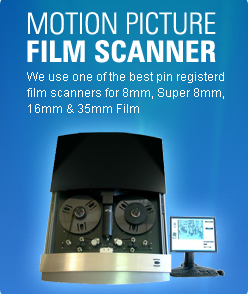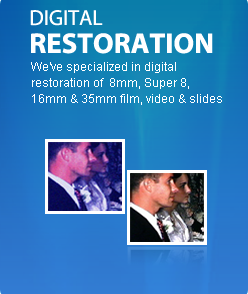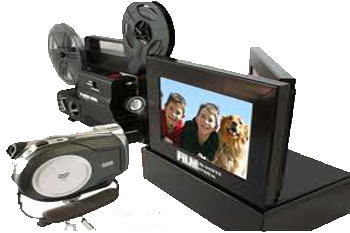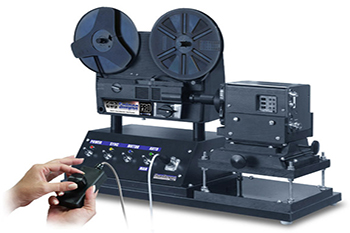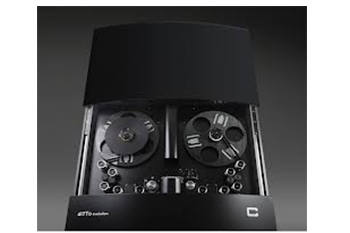
Film Conversion Equipment
Film Scanning and Film Transfer Equipment Types
The type of film scanning machine used for your 8mm, Super 8 or 16mm film conversion will have as much of an impact on the quality you receive as the resolution of the scan itself will. For example, if you wanted to digitize a photograph and tried doing it two different ways. You first put the photograph down on a table and took a picture of it using your smart phone or camera. Then you took the picture and scanned it using a flatbed scanner. If you compare the two side by side on your computer it will become really obvious that the flatbed scanner produced a digital image as good as the photograph. However, the picture you took with your phone or camera does not look close to the quality of the original photograph.
The same goes for scanning your 8mm, Super 8 or 16mm film. The real-time and frame by frame machines below are using a camcorder to take a picture of your film. The motion picture film scanner and Datacine machine are scanning the film. The results will be significantly different.
Film Conversion Equipment |
|
Real Time
|
|
Frame by Frame
|
|
Professional Film Scanners
|
|
Equally important as resolution is the type of film transfer. There are a few basic types of film transfer processes. More than 80% of the companies out there today use a real-time transfer. Any type of real-time film transfer will result in video that is 40-50% worse than the film’s current condition.
So, at this point you’ve learned that film transfers can capture at standard definition (480 lines), high definition (1080 lines) or 2K (1556 lines). You’ve also learned about the 3 different types of film transfers being used today. In order from least to best quality we have:
Akron Fun Facts: Due to competition with the superior European radial tires the rubber industry in Akron experienced a significant decline. During the early portion of the 1990's all the tire companies except for Goodyear had relocated their headquarters out of the city. Akron is located in Summit County in the northeastern portion of Ohio, situated along the Cuyahoga River. The city was established in 1825.
Ohio Fun Facts: Initially colonized by French fur traders, Ohio became a British colonial possession following the French and Indian War in 1754. At the end of the American Revolution, Britain ceded control of the territory to the newly formed United States, which incorporated it into the Northwest Territory. Ohio became a state on March 1, 1803, although no formal declaration was madeuntil 1953, when President Dwight Eisenhower officially signed the documents making it a state, retroactive to the original date.Ohio issometimes called the “Mother of Modern Presidents,” having sent seven Ohioans (both natives and residents)to the White House since 1869. Ohio is also known as the home of the Rock and Roll Hall of Fame in Cleveland, the NationalUnderground RailroadFreedom Centerin Cincinnati and National Football League Hall of Fame in Canton.
